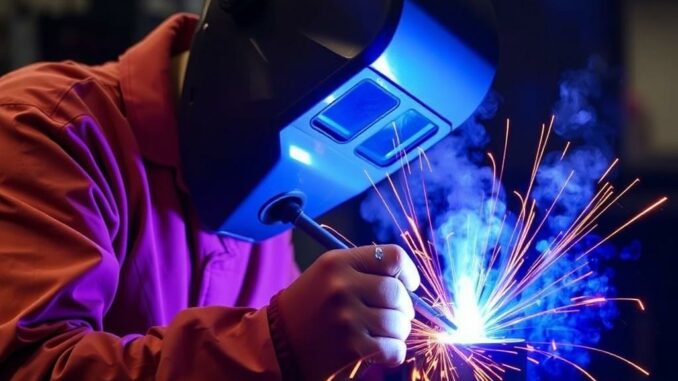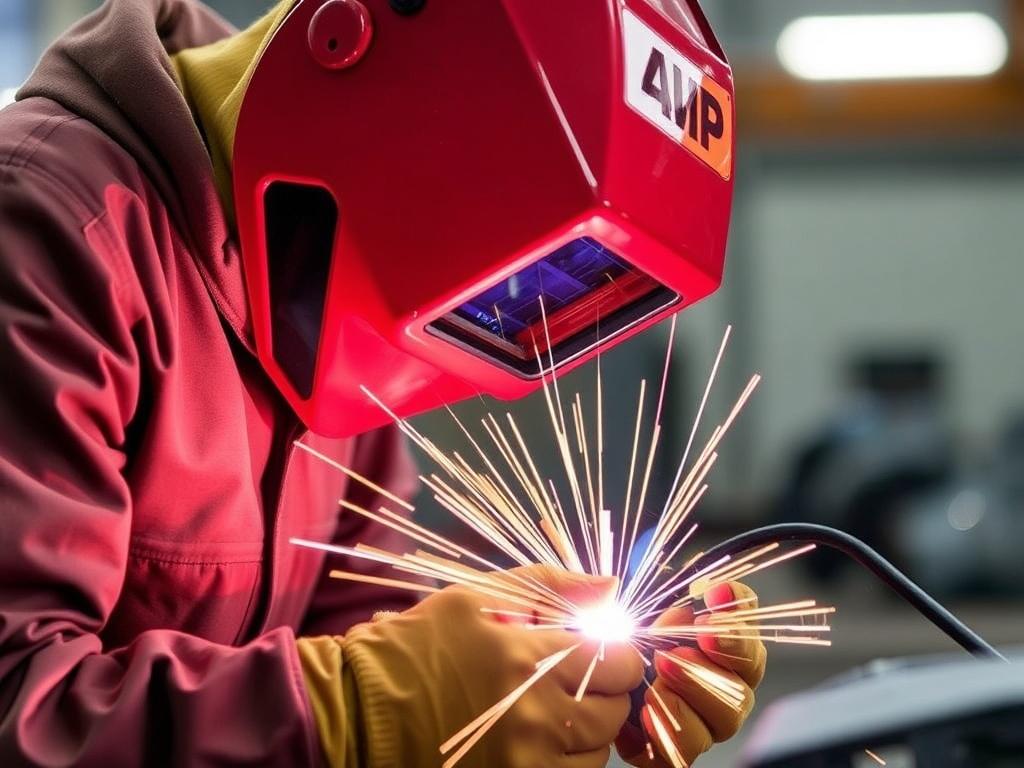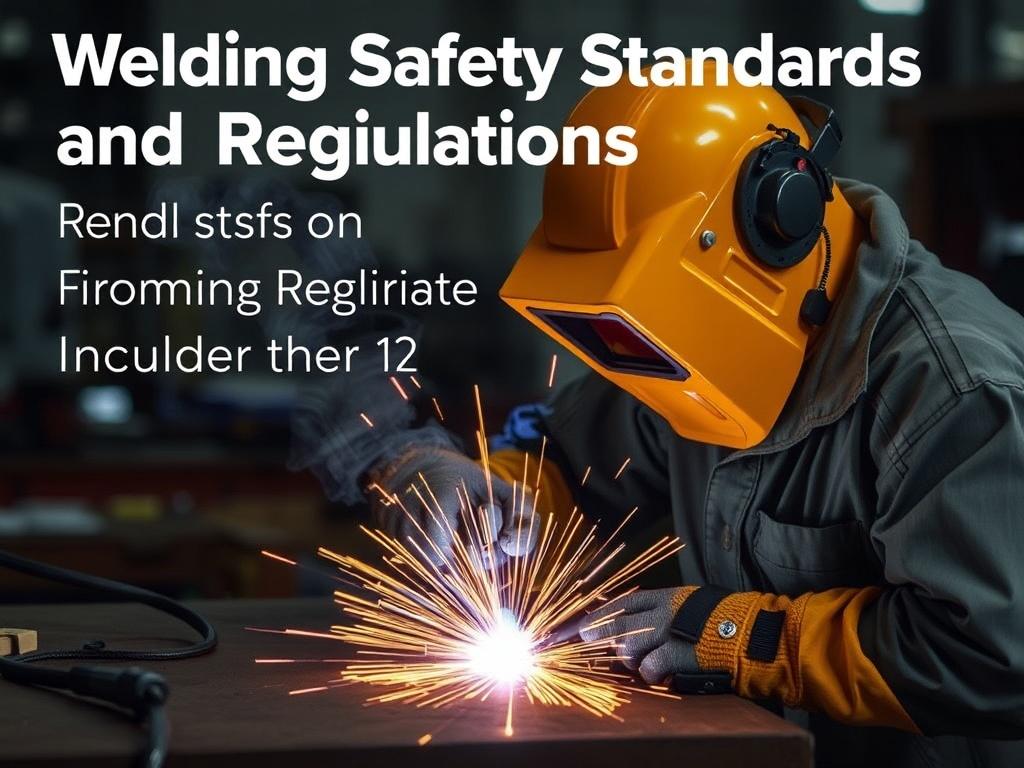
Welding is an essential and widely used process in many industries, from construction and manufacturing to automotive repair and even art. However, welding also involves significant risks that, if not properly managed, can lead to serious accidents, injuries, and health problems. Understanding welding safety standards and regulations is not just an administrative requirement—it’s a vital step toward creating a safe working environment and protecting the lives of welders everywhere.
In this detailed article, we will explore everything you need to know about welding safety standards and regulations. We will discuss the core hazards welders face, review the most important regulatory bodies and guidelines, and examine practical safety measures that can prevent accidents in the workplace. Whether you’re an experienced welder, a supervisor ensuring compliance, or simply interested in industrial safety, this guide will give you a clear and engaging overview.
Understanding the Importance of Welding Safety Standards and Regulations

First, it’s important to understand why welding safety standards and regulations exist. Welding involves the use of intense heat, electrical currents, harmful fumes, and sometimes explosive gases. These factors combine to create an environment where accidents can happen quickly and cause severe consequences.
Regulations and standards serve multiple purposes:
- Protecting Workers: By setting minimum safety requirements, these standards reduce the risk of injuries such as burns, eye damage, electrical shocks, and respiratory illnesses.
- Legal Compliance: Employers must comply with these regulations to avoid legal penalties, fines, and costly shutdowns.
- Enhancing Productivity: A safe workplace improves job satisfaction, decreases lost time due to accidents, and maintains smooth workflows.
Without adherence to welding safety standards, the risks multiply, and it is often the welder and nearby workers who bear the brunt of these unsafe conditions.
Common Hazards in Welding That Safety Standards Address
Welding presents a variety of hazards that can cause both immediate injuries and long-term health issues. Understanding the scope of these dangers helps us appreciate the role of safety standards.
Physical Hazards
Physical dangers in welding include:
- Burns: Contact with hot metal, sparks, or molten slag can cause severe skin burns.
- Eye Injuries: Exposure to bright ultraviolet (UV) and infrared (IR) radiation can lead to “welder’s flash” or photokeratitis, a painful eye condition.
- Electric Shock: Welding involves electrical currents, making the risk of shock a serious concern, especially in damp conditions.
- Noise: Excessive noise can cause hearing loss if proper protection is not used.
- Fire and Explosion: Sparks may ignite flammable materials nearby, leading to fires or explosions.
Chemical and Respiratory Hazards
In addition to physical risks, welders face chemical hazards due to fumes and gases generated during welding processes:
- Welding Fumes: These include metal oxides and gases like hexavalent chromium or manganese, which can cause lung irritation and longer-term conditions such as metal fume fever.
- Gases: Shielding gases like argon or carbon dioxide, as well as toxic gases like carbon monoxide, can build up in enclosed areas.
- Asphyxiation: Oxygen displacement by inert gases can lead to suffocation in poorly ventilated spaces.
Ergonomic and Other Hazards
Welding often requires awkward postures, lifting heavy equipment, and repetitive movements, which may result in musculoskeletal disorders over time. Heat exhaustion and dehydration are other risks welders face when working in hot environments.
Major Welding Safety Standards and Regulatory Bodies
Various international, national, and occupational authorities have developed welding safety standards and regulations to mitigate these hazards. The following are the key organizations and their relevant standards:
Occupational Safety and Health Administration (OSHA)
In the United States, OSHA is the primary regulatory agency responsible for workplace safety. OSHA standards related to welding can be found under 29 CFR 1910, specifically:
- 29 CFR 1910.252 – Welding, Cutting, and Brazing: This section outlines general safety requirements including fire prevention, ventilation, PPE, and training.
- 29 CFR 1910.134 – Respiratory Protection: Requirements for respirators in welding environments with airborne contaminants.
- 29 CFR 1910.147 – Control of Hazardous Energy (Lockout/Tagout): Procedures to prevent accidental energizing of equipment during maintenance.
Employers must implement these standards to protect workers from welding hazards and maintain compliance with OSHA regulations.
American Welding Society (AWS)
The AWS plays a pivotal role in setting industry standards, certifications, and best practices specific to welding. Some key publications include:
- AWS D1.1: Structural welding code covering procedures and inspections for welding steel structures.
- AWS F4.1: Guidelines for welding safety.
The AWS standards complement OSHA regulations, focusing heavily on technical aspects and quality assurance.
National Fire Protection Association (NFPA)
The NFPA develops important fire safety standards that apply to welding in hazardous areas. The most relevant code is:
- NFPA 51B – Fire Prevention During Welding, Cutting, and Other Hot Work: This standard provides detailed fire prevention methods, including fire watches and safe setups during hot work operations.
International Standards
Globally, welding safety standards are overseen by several bodies including the International Organization for Standardization (ISO) and local regulatory agencies:
- ISO 14731: Welding coordination guidelines, including safety management aspects.
- European Union Directives: Various OSHA-like directives such as the Machinery Directive and Workplace Directive set welding safety expectations for member countries.
Key Components of Welding Safety Standards
Now that we’ve looked at the main hazards and regulations, let’s break down the critical safety components that welding safety standards address. These components provide a blueprint for safe welding operations.
Personal Protective Equipment (PPE)
PPE is the first line of defense against welding hazards. Standards specify essential items such as:
| Type of PPE | Purpose | Standards/Recommendations |
|---|---|---|
| Welding Helmet with Filter Lens | Protects eyes and face from UV and IR radiation, sparks | AWS Z87.1 – Eye and Face Protection Devices |
| Flame-Resistant Gloves | Protect hands from burns and electrical shock | OSHA 29 CFR 1910.132 – PPE General Requirements |
| Protective Clothing (Jackets, Aprons) | Protects skin and clothes from sparks and heat | NFPA 2112 – Flame Resistant Garments |
| Respirators or Fume Extractors | Protect respiratory system from hazardous fumes | OSHA 29 CFR 1910.134 – Respiratory Protection |
| Ear Protection | Protects from noise-related hearing loss | OSHA 29 CFR 1910.95 – Noise |
Using PPE properly is crucial, but standards also emphasize the correct maintenance, inspection, and worker training to ensure PPE effectiveness.
Ventilation and Fume Control
Due to the toxic fumes emitted during welding, proper ventilation is critical. Welding safety standards require:
- Local exhaust ventilation systems to directly capture fumes at their source.
- General ventilation to reduce ambient hazardous concentrations.
- Air monitoring to measure contaminant levels and ensure they remain below permissible exposure limits.
Without adequate ventilation, welders face a high risk of respiratory illnesses, making compliance with these standards a life-saving necessity.
Fire Prevention and Hot Work Permits
Since welding produces sparks and intense heat, fire prevention is paramount. Safety standards recommend measures such as:
- Clearing flammable materials from the welding area before work begins.
- Using fire-resistant blankets and shields.
- Implementing a hot work permit system that requires inspections and authorizations prior to welding.
- Designating fire watchers during and after welding to promptly detect and respond to fires.
Training and Certification
Welding safety standards require adequate training for welders and supervisors. This training covers:
- Hazard recognition and control measures.
- Proper use and maintenance of PPE.
- Safe operating procedures and emergency response.
- Compliance with applicable safety standards and regulations.
Furthermore, certifications from bodies such as the AWS validate a welder’s skills and understanding of safety practices, increasing workplace confidence and safety culture.
Implementing Welding Safety Standards in the Workplace

Having knowledge of standards is one thing, but putting them into practice effectively is another. Successful implementation requires a systematic approach. Here’s a step-by-step guide to help employers and safety personnel apply welding safety standards on the job.
Step 1: Conduct a Comprehensive Hazard Assessment
Every welding site is different. Begin by assessing the workplace to identify all potential welding hazards, including:
- Types of welding processes used.
- Materials and chemicals involved.
- Environmental conditions such as ventilation and workspace layout.
- Potential fire or explosion risks.
This assessment forms the foundation for targeted safety interventions and ensures compliance with regulatory requirements.
Step 2: Develop and Enforce Safety Procedures
Create clear, written welding safety protocols that are tailored to your workplace hazards and aligned with relevant standards. Key procedures should cover:
- PPE usage guidelines.
- Ventilation requirements.
- Fire prevention and hot work permits.
- Lockout/tagout and electrical safety.
- Incident reporting and emergency response.
Make sure all employees understand and follow these procedures consistently.
Step 3: Provide Ongoing Training and Education
Training is never a one-time event. Regular refresher sessions and updates help welders stay informed on best practices, new hazards, and updates to standards. Training should be practical, engaging, and include demonstrations where possible.
Step 4: Monitor Compliance and Conduct Audits
Implement routine inspections and audits to verify that safety protocols are being followed. Use internal checklists or hire external safety consultants as needed. This helps identify gaps or emerging risks before incidents occur.
Step 5: Foster a Safety Culture
Encouraging open communication about safety concerns, rewarding safe behavior, and involving workers in safety planning leads to a strong safety culture where everyone feels responsible and empowered to maintain safe welding environments.
Case Studies: Lessons from Welding Safety Incidents

To understand the real-world impact of welding safety standards and their absence, let’s examine a couple of case studies that highlight both failures and successes.
Case Study 1: Fire Explosion due to Ignored Hot Work Permits
In a metal fabrication shop, welders began work inside a storage area without obtaining a hot work permit or clearing flammable materials adequately. A spark ignited residual solvents, resulting in a fire and explosion that caused significant injuries and property damage.
Lesson: The absence of strict adherence to fire prevention standards and hot work permit systems can lead to catastrophic outcomes. This reinforces why regulations like NFPA 51B exist and must be followed.
Case Study 2: Reduced Respiratory Illness After Implementing Ventilation Improvements
A shipyard noticed high incidences of respiratory issues among its welders. After installing localized fume extraction systems and providing proper respirators as per OSHA and AWS standards, workers reported fewer health complaints, and absenteeism dropped.
Lesson: Investing in ventilation and PPE as outlined in welding safety standards can dramatically improve worker health and productivity.
Frequently Asked Questions About Welding Safety Standards
| Question | Answer |
|---|---|
| Why are welding safety standards important? | They protect workers from serious injuries and health risks by establishing minimum safety requirements. |
| Who is responsible for enforcing welding safety regulations? | Employers must enforce safety standards, while agencies like OSHA regulate and inspect workplaces to ensure compliance. |
| What PPE is essential for welders? | Welding helmets, flame-resistant gloves and clothing, respirators, and ear protection are key PPE items. |
| How often should welders be trained on safety? | Initial training plus regular refresher courses and updates when standards or procedures change. |
| Can welding be safely done in confined spaces? | Yes, but only with strict adherence to ventilation, gas monitoring, and safety protocols specific to confined space work. |
Conclusion: Welding Safety Standards Save Lives and Improve Workplaces
Welding is a demanding and complex craft that comes with inherent risks. However, through diligent adherence to welding safety standards and regulations, these risks can be managed effectively, ensuring welders go home safely every day. By understanding hazards, adopting proven safety measures, equipping workers with proper PPE, and fostering a culture of safety, employers create safer workplaces with fewer injuries and higher productivity.
Remember, safety is not a one-time checklist—it’s an ongoing commitment that involves every individual in the welding process. As technology advances and industries evolve, staying informed and compliant with the latest welding safety standards and regulations is essential for protecting workers and sustaining successful business operations.
